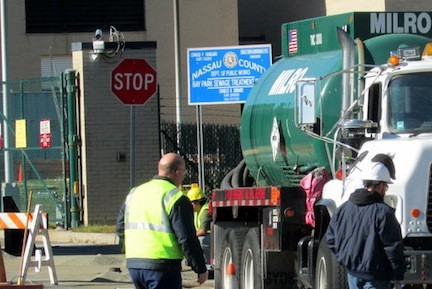Upgrades coming to Bay Park Sewage Plant
County outlines $262 million in funding for sewage facility
Residents who live near the Bay Park Sewage Treatment Plant have long voiced their frustration with the plant’s loud noises and foul odors, especially after Hurricane Sandy, but upgrades to the plant that were announced last week may solve some of those problems.
County Executive Ed Mangano unveiled $262 million in improvements to the plant, which was built in 1949 and treats 65 million gallons of sewage per day — 40 percent of the county’s waste. The money was unanimously approved by the County Legislature in July, but Mangano’s request to borrow $722 million for additional upgrades was denied.
According to Mike Martino, spokesman for the Nassau County Department of Public Works, Mangano expects 90 percent of the money that will be borrowed to fund the plant upgrades to be reimbursed by the federal government.
The funds will be used to reduce odors, replace a failed control transformer, which supplies power to the plant’s control system, and clean and rehabilitate the plant’s digesters.
Nassau County officials describe an addition to the process of controlling the smell, a primary settling tank odor-control facility, as the best available technology for odor control.
“These projects will greatly improve the operations at the plant and the quality of life for those who live closest to the facility,” Mangano said.
Deborah Lilly, who has lived near the plant for 37 years, said she favored the upgrades, but added that the plant had problems long before Hurricane Sandy hit it with a nine-foot tidal surge. The odor from the plant, Lilly said, has been “overpowering” in recent days, moving her to call and complain and to close her windows two nights last weekend.
County officials also outlined plans to replace the odor-control system in the plant’s aeration tanks, in the interest of using fewer chemicals. Odor controls will be added to the plant’s digesters, which a contractor has begun cleaning and rehabilitating, a project that is expected to take 16 months. Once it is completed, the digesters will run at a constant temperature, which will improve the plant’s operation.

 49.0°,
Fair
49.0°,
Fair 




